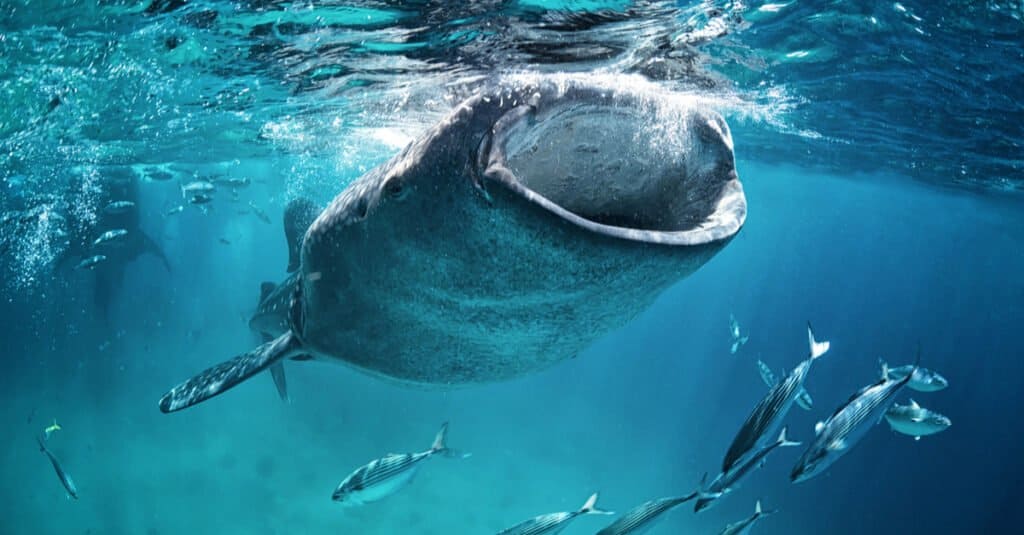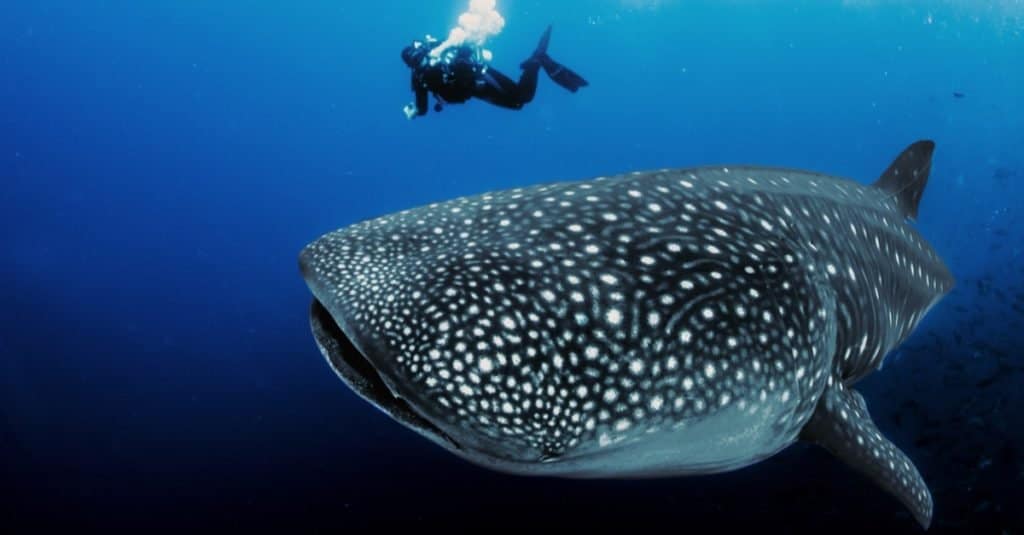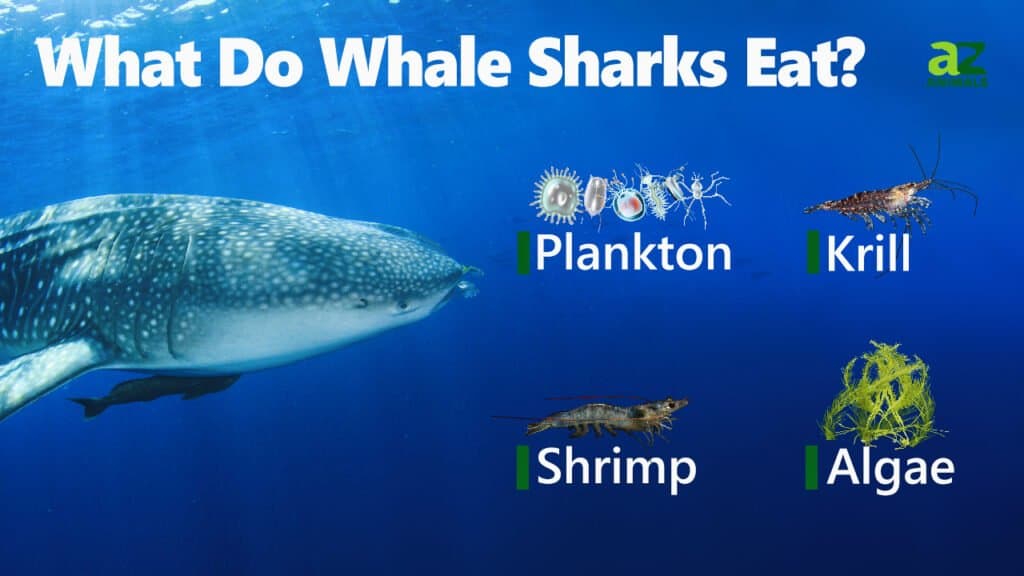Whale sharks are the largest species of fish in the sea. These gentle giants are unique creatures residing in specific habitats. A key factor determining where this animal species lives is the water temperature. Although they can survive in balanced conditions, they prefer warm waters.
There are reliable locations where they are usually spotted if you are on an adventure to see these giant creatures. This article provides an insightful but interesting breakdown of whale sharks’ locations.
Where Do Whale Sharks Live?

Whale sharks are commonly found in tropical and warm temperate seas.
©Fata Morgana by Andrew Marriott/Shutterstock.com
Whale sharks live in different locations, but they mainly reside in tropical waters. Interestingly, they have a geographical boundary where they are most common. This location is between latitudes 30°N and 35°S.
Whale sharks, nevertheless, prefer warm waters, so they live majorly in the tropical ocean. Some of the popular places where you find these large fish include Australia, the Caribbean sea, and Mexico. South Africa, Tanzania, and Mozambique are locations of common sightings in Africa. The Philippines and the Maldives are also locations to visit if you want to check them out.
How Many Whale Sharks Are Left In The World?

In the last 75 years, the seas have lost more than half their whale shark population.
©Lindsey Lu/Shutterstock.com
There are about 200,000 to 240,000 whale sharks left in all the waters across the globe. This number is small when you consider the sharp decline in their population. Surprisingly, in the last 75 years, the seas have lost more than half their whale shark population.
Whale shark facts show that these gentle giants are now endangered due to hunting habits in the Indo-Asian waters of the Indo-Pacific. Because of their curious nature, some whale sharks wander around hunting boats where they are caught for food. Fishing gears also trap these animals as they find it hard to escape due to their size.
Another major factor that affects this number is habitat loss due to coastal development and land-based pollution. Besides, the increased influence of human activities on water bodies is affecting the home of whale sharks worldwide.
Why And How Far Do Whale Sharks Migrate?
Whale sharks move around a lot in large water bodies worldwide for breeding and feeding purposes. Migration of this shark species occurs yearly and is often a long distance. On average, the distance can be up to 7,000 miles across different water bodies.
The longest recorded migration distance of any species of animal on Earth was a female whale shark that traveled more than 12,000 miles, lasting 850 days.
What Do Whale Sharks Eat?

Whale sharks eat tiny fishes, shrimps, and plankton. These options are surprising, considering the size of the fish. However, they compensate for these small sizes by consuming large numbers of these foods. This number has a significant bearing on their migration habits.
Despite the significant distance in migration, one incredible fact about whale sharks is that they are slow swimmers. They can only travel about 3 miles every hour and they continue to move as they feed. This distance can go up to 40 miles at the end of the day.
How Long Do Whale Sharks Live?
Interestingly, whale sharks live to about 100 years on average. Some tracked members of the whale shark family lived for nearly 150 years. This number is impressive considering their year-round migrating lifestyle and the dangers of hunting.
Unfortunately, these animals don’t do well in captivity. A study shows that whale sharks live for only about two years in captivity. Comparing this to how long they live in the wild shows whale sharks are not the type for aquariums.
What Are the Adaptations of the Whale Shark?
Whale sharks’ structural qualities and abilities that allow them to live comfortably in the waters is known as adaptation. There are numerous adaptations but the most prominent is the size of their mouth. They can open it to about four feet wide, which is more than a meter wide.
Whale sharks are also opportunistic eaters like other shark species. They have a habit of sucking fish away from hunting nets. Sadly, sometimes, they get caught in traps themselves.
Whale sharks also have a sensitive nerve cell known as the Ampullae of Lorenzini. This cell sits at the top of the head region and it helps the fish sense movement of other fishes in the sea. They can use this to hunt for food even in the dark.
The photo featured at the top of this post is © Onusa Putapitak/Shutterstock.com
Thank you for reading! Have some feedback for us? Contact the AZ Animals editorial team.







